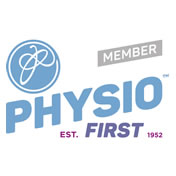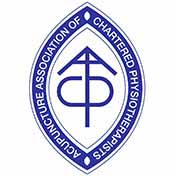Guillain-Barré Syndrome is a disease in which the peripheral nerves become inflamed and cease to work properly. This results in a general ascending and symmetrical weakness throughout the body, first affecting the feet and legs, and the hands and arms, before spreading towards the trunk and face and, in severe cases, involving the muscles used for swallowing and breathing.
It is thought that the development of this disease is through an autoimmune response following an episode of acute infection of some kind (for example a chest infection or a bout of diarrhoea). It attacks the peripheral nerves and damages the myelin, the fatty insulating layer of the nerve which is important in nerve impulse conduction. This leads to a paralysis of muscle, that may be accompanied by sensory disturbances. Symptom presentation can be severe initially but recovery can be rapid if re-myelination occurs.
Guillain-Barré Syndrome, unlike disorders such as Multiple Sclerosis, is a peripheral nerve disorder and does not generally cause nerve damage to the brain or spinal cord (central nervous system).
Early symptoms may include tingling and numbness in the fingers and toes and progressive weakening of the limbs. Some individuals describe their legs feeling ‘rubbery and unsteady’, and this rapid progression of deterioration often happens within a period of days.
Cases may be mild, with a moderate difficulty with walking and moving around functionally (needing the use of a stick or frame), and progression of the muscle weakness ceasing a short time after the onset. In more severe cases, the weakening continues to progress and can result in paralysis of the legs and arms. In about 40% of those affected, the weakness becomes more widespread, causing respiratory difficulties and problems with swallowing and speech. Most people reach the stage of greatest weakness about two weeks after the onset of the disease. Most require hospitalisation to some level and about 30% require ventilation of some kind.
In the majority of cases, recovery starts after the fourth week from the onset of the disorder. Approximately 80% of patients have a complete recovery within a few months to a year, although minor symptoms may persist. About 5–10% of sufferers recover with severe disability, with most of these cases involving peripheral motor and sensory nerve damage with an inability of the re-myelination and axonal regeneration process.
About 30% of individuals with Guillain-Barré Syndrome still have a residual weakness after 3 years, and approximately 3% may suffer a relapse of muscle weakness and tingling sensations many years after the initial attack.
Reduced stamina and exhaustion after a period of increased activity is often reported during the recovery phase. In addition, pain will be an issue for former Guillain-Barré Syndrome patients. 50-75% of recovered patients complain about occasional pins and needles, pain, and other vague sensory irregularities in their feet and legs.
How is it treated?
 There is no known cure for Guillain-Barré Syndrome. However, there are therapies that lessen the severity of the illness and accelerate the recovery in most patients. There are also a number of ways to treat the complications of the disease.
There is no known cure for Guillain-Barré Syndrome. However, there are therapies that lessen the severity of the illness and accelerate the recovery in most patients. There are also a number of ways to treat the complications of the disease.
Currently, plasma exchange (sometimes called plasmaphoresis) and high-dose immunoglobulin therapy are used. Both of them are equally effective, but immunoglobulin is easier to administer. Scientists still don't know exactly why plasma exchange works, but the technique seems to reduce the severity and duration of the Guillain-Barré episode.
Physiotherapy management
Physiotherapy input for Guillain-Barré Syndrome should start immediately following the onset of the disease, often upon admission to hospital. It should continue until maximum recovery and outcome is achieved.
The rehabilitation required largely depends upon the extent of the disease progression and the areas of the body which are affected. In severe cases, this can include respiratory physiotherapy following the ventilation of an individual, and passive limb movements to maintain joint ranges of movement and muscle flexibility whilst they are immobilised in bed. Later, as the patient begins to recover limb control, physiotherapy is vital in assisting the restoration of muscle strength, limb control, balance and co-ordination. Patients are shocked to discover how little they can do after just a few weeks in bed. Physiotherapy does not affect the nerve healing process, it rehabilitates the muscles only, working towards functional restoration and increasing stamina.
Patients recovering from Guillain-Barré Syndrome require a long period of recovery between bouts of exercise. During the rehabilitation process, the individual is taught to use their limited energy constructively, by using their body correctly, avoiding unnecessary routines, and compensating for difficult activities by re-thinking them and doing them another way. As their muscles become stronger, a person will feel less exhausted.
An important part of the physiotherapy process is learning to recognise the body's signals and warnings when the limit of exercise for that session is reached. These signals may include tingling, numbness or other sensory abnormalities within the muscle group. Pushing oneself over the limit can lead to pain, spasm, weakness and temporarily fatigued muscles. Patients must learn their own limits, the need to rest as required, and how to interpret their body's signals and symptoms.
Neuro-physiotherapy rehabilitation aims to increase muscle strength, maintain joint ranges of movement, restore mobility and balance, and re-train the normal movement patterns that are necessary for normal function and independence.
Individuals with Guillain-Barré Syndrome face not only physical difficulties, but emotionally painful periods as well. It is often extremely difficult for patients to adjust to a state of sudden paralysis and dependence on others for help with routine daily activities. Physiotherapy input can help through support and education as part of a holistic approach, and we can advise patients about the help and support that can be provided through the use of other associated health professionals.
At Yorkshire Neuro Physiotherapy, our specialist neuro-physiotherapy team can provide essential rehabilitation throughout the whole of the recovery process. Treatment sessions may take place within your own home or within one of our designated neuro-rehabilitation clinics. We actively support the involvement of relatives and carers throughout the rehabilitation process, encouraging self-management and independent exercise between the physiotherapy sessions to maximise outcome.
If you would like to know more about the services we can offer, please feel free to contact one of the team who will be happy to chat with you, advise you as necessary, and arrange an appointment to suit you if this is then required.





